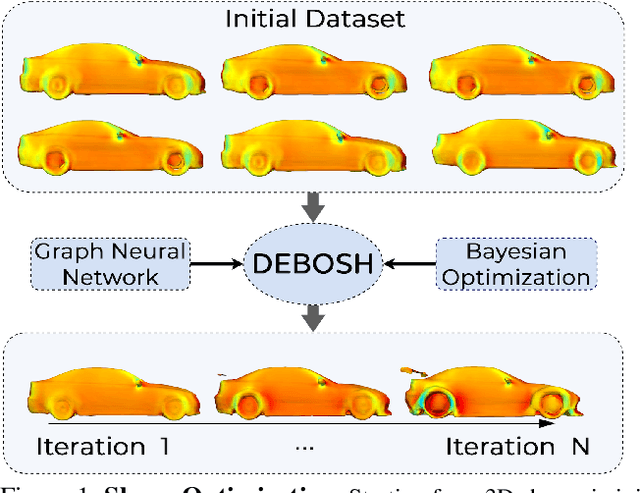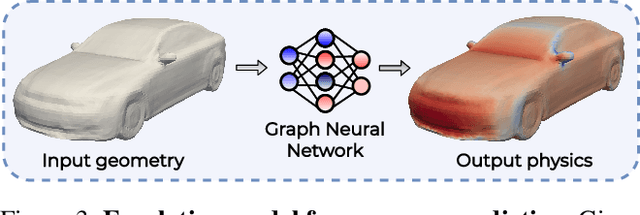Artem Lukoyanov
DEBOSH: Deep Bayesian Shape Optimization
Sep 28, 2021



Abstract:Shape optimization is at the heart of many industrial applications, such as aerodynamics, heat transfer, and structural analysis. It has recently been shown that Graph Neural Networks (GNNs) can predict the performance of a shape quickly and accurately and be used to optimize more effectively than traditional techniques that rely on response-surfaces obtained by Kriging. However, GNNs suffer from the fact that they do not evaluate their own accuracy, which is something Bayesian Optimization methods require. Therefore, estimating confidence in generated predictions is necessary to go beyond straight deterministic optimization, which is less effective. In this paper, we demonstrate that we can use Ensembles-based technique to overcome this limitation and outperform the state-of-the-art. Our experiments on diverse aerodynamics and structural analysis tasks prove that adding uncertainty to shape optimization significantly improves the quality of resulting shapes and reduces the time required for the optimization.
Synthetic patches, real images: screening for centrosome aberrations in EM images of human cancer cells
Aug 27, 2019



Abstract:Recent advances in high-throughput electron microscopy imaging enable detailed study of centrosome aberrations in cancer cells. While the image acquisition in such pipelines is automated, manual detection of centrioles is still necessary to select cells for re-imaging at higher magnification. In this contribution we propose an algorithm which performs this step automatically and with high accuracy. From the image labels produced by human experts and a 3D model of a centriole we construct an additional training set with patch-level labels. A two-level DenseNet is trained on the hybrid training data with synthetic patches and real images, achieving much better results on real patient data than training only at the image-level. The code can be found at https://github.com/kreshuklab/centriole_detection.
 Add to Chrome
Add to Chrome Add to Firefox
Add to Firefox Add to Edge
Add to Edge